When it comes to no-bake oatmeal cookies, quick-cooking oats are the go-to grain of choice -- but not always. Just as in baking, making ingredient substitutions for stovetop-cooked desserts can be a mistake. In the case of no-bake oatmeal cookies, the proportions of liquids and fats to the oatmeal are important to achieve a cookie that firms up without baking, yet doesn't dry out.
Thinking Quick
Quick-cooking oats serve as a kind of middle ground between old-fashioned oats (rolled oats) and instant oats in no-bake recipes. Quick-cooking oats set up more quickly after being exposed to hot ingredients than old-fashioned oats and are less apt to dry out in typical no-bake cookie recipes than instant oats are. Quick-cooking oats come in smaller pieces than rolled oats and are more highly processed. As a result, they are considered less flavorful and chewy than old-fashioned oats.
Rolling with It
For no-bake cookies, use old-fashioned oats, also called rolled oats, interchangeably with quick-cooking oats, as long as the recipe specifies that either is acceptable. Use both in the same amounts in the recipe, but let the mixture sit longer after cooking when using old-fashioned oats. Both oatmeal types are more alike than instant oatmeal, which is more absorbent. Old-fashioned oats will produce a chewier cookie with larger oat pieces than quick-cooking oats.
Stirring the Pot
Follow recipes closely. In general, you'll combine milk, sweetener and a fat such as butter or oil in a saucepan, and bring it to a boil. After the mixture boils for the specified time, take the pan off the heat, and stir in the oatmeal and additional ingredients such as raisins. Drop the mixture by spoonfuls onto waxed paper. Do this immediately after mixing the oatmeal into the hot mixture -- in the case of quick-cooking oats -- or after 5 minutes of chilling if using old-fashioned oats. Let the cookies stand at room temperature or chill them, according to the recipe.
Going Against the Grain
While recipes often specify quick-cooking oats for no-bake oatmeal cookies, the recipe may be one that was developed in a test kitchen or to promote a specific product, such as instant oatmeal. If you try one of these recipes, use exactly the oat form specified. Oat flour and instant oats are more powdery and absorbent than the larger-sized oat types. A reputable recipe source will have adjusted fats and liquid accordingly.
Related Articles

Can Fast Acting Yeast Be Used in Place ...

Can I Substitute Rolled Oats for Flour ...
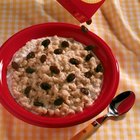
How to Make Quaker Oatmeal
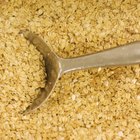
Differences Between Quaker Quick Oats & ...

How to Cook Old Fashioned Thick Rolled ...
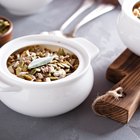
How to Cook Oat Groats in a Slow Cooker

How to Cook Oat Groats in a Crock Pot

How to Prepare Quaker Oatmeal

What Is White Oat?
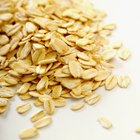
Can You Substitute Quick Cook Oats for ...
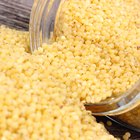
How to Ferment Whole Grains
Flour Substitute for Muffins
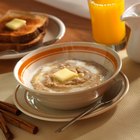
How to Microwave Steel Cut Oats

Purpose of Rolled Oats in Baking

Can You Use Oatmeal to Remove ...

What Is the Difference Between Rolled ...

Shortbread Cookie Recipe

How to Make Goetta in a Crock-Pot

How to Use Oat Flour in a Pie Crust

How to Substitute Splenda for Sugar
References
Writer Bio
Ellen Douglas has written on food, gardening, education and the arts since 1992. Douglas has worked as a staff reporter for the Lakeville Journal newspaper group. Previously, she served as a communication specialist in the nonprofit field. She received her Bachelor of Arts from the University of Connecticut.